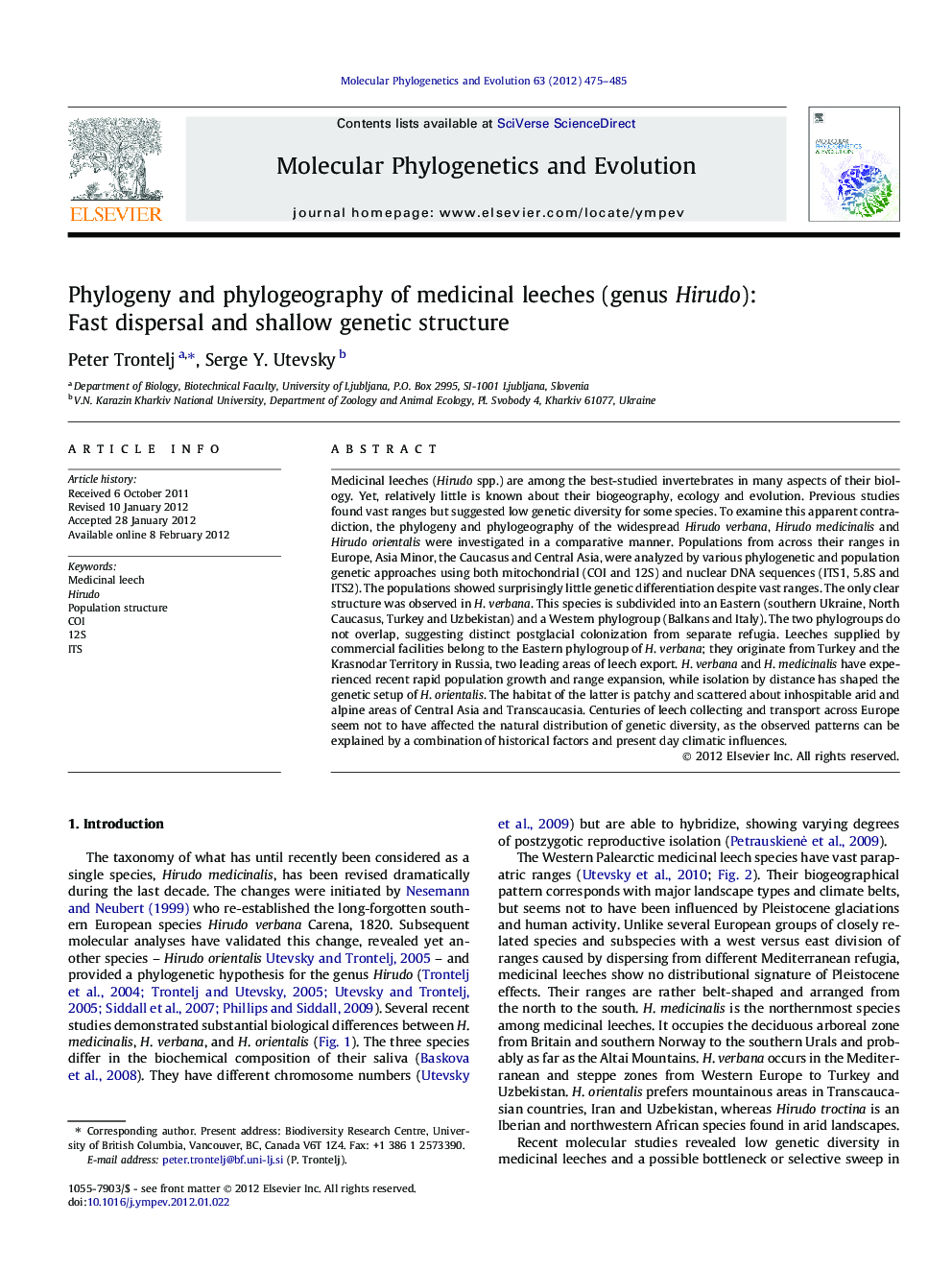| Article ID | Journal | Published Year | Pages | File Type |
|---|---|---|---|---|
| 2834064 | Molecular Phylogenetics and Evolution | 2012 | 11 Pages |
Medicinal leeches (Hirudo spp.) are among the best-studied invertebrates in many aspects of their biology. Yet, relatively little is known about their biogeography, ecology and evolution. Previous studies found vast ranges but suggested low genetic diversity for some species. To examine this apparent contradiction, the phylogeny and phylogeography of the widespread Hirudo verbana, Hirudo medicinalis and Hirudo orientalis were investigated in a comparative manner. Populations from across their ranges in Europe, Asia Minor, the Caucasus and Central Asia, were analyzed by various phylogenetic and population genetic approaches using both mitochondrial (COI and 12S) and nuclear DNA sequences (ITS1, 5.8S and ITS2). The populations showed surprisingly little genetic differentiation despite vast ranges. The only clear structure was observed in H. verbana. This species is subdivided into an Eastern (southern Ukraine, North Caucasus, Turkey and Uzbekistan) and a Western phylogroup (Balkans and Italy). The two phylogroups do not overlap, suggesting distinct postglacial colonization from separate refugia. Leeches supplied by commercial facilities belong to the Eastern phylogroup of H. verbana; they originate from Turkey and the Krasnodar Territory in Russia, two leading areas of leech export. H. verbana and H. medicinalis have experienced recent rapid population growth and range expansion, while isolation by distance has shaped the genetic setup of H. orientalis. The habitat of the latter is patchy and scattered about inhospitable arid and alpine areas of Central Asia and Transcaucasia. Centuries of leech collecting and transport across Europe seem not to have affected the natural distribution of genetic diversity, as the observed patterns can be explained by a combination of historical factors and present day climatic influences.
Graphical abstractFigure optionsDownload full-size imageDownload as PowerPoint slideHighlights► The three medicinal leech species have vast ranges but low genetic diversity. ► Commercial medicinal leeches sold in the West are H. verbana and originate from Turkey and Krasnodar, Russia. ► The cold-adapted H. medicinalis and H. orientalis are likely sister species. ► Only Hirudo verbana has geographic genetic structure, subdivided into Western and Eastern phylogroup. ► Rapid expansion, rather than isolation by distance, shaped the genetic structure of H. medicinalis and H. verbana.
